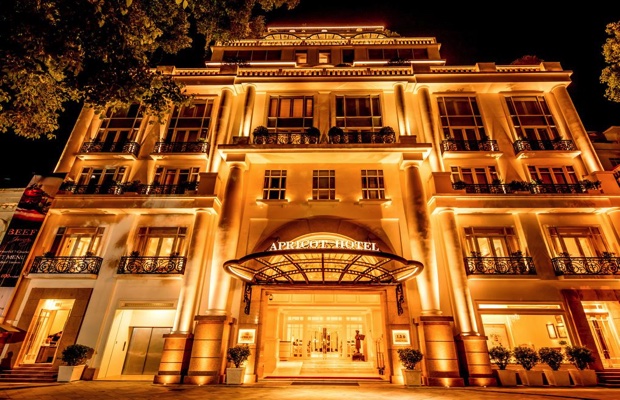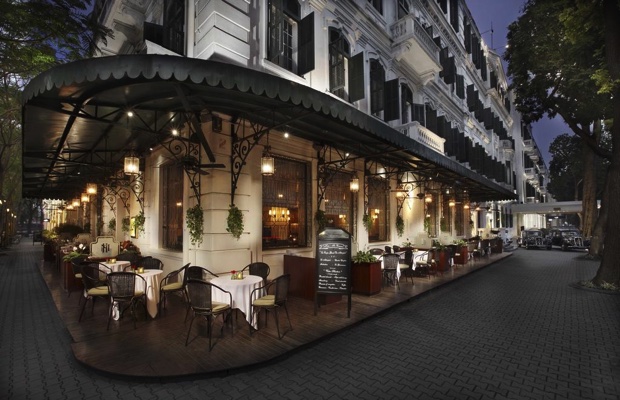Tran Quoc Pagoda
Tran Quoc Pagoda
Vietnam
Hanoi
Hanoi Travel Guide
Book Tour & Activities
Your tour in Hanoi.
Book your stay
Your hotel in Hanoi.
Overview
Tran Quoc Pagoda is the oldest of its kind in Hanoi, dating back to the 6th century during the reign of Emperor Ly Nam De Dynasty (544 - 548). The Buddhist shrine has undergone several changes throughout the years, particularly its renaming from An Quoc to Tran Quoc (protecting the country) by Emperor Le Huy Tong in the 17th century.
Although it’s now set on an islet within West Lake, the pagoda was originally located on banks of Red River before it’s relocated in 1615due to the river’s encroachment. Surrounded by lush greenery, Tran Quoc Pagoda was a favourite amongst the kings and royal families for festivals, full moons, and Tet Festival.
History
The Trấn Quốc Pagoda in Hanoi is the oldest pagoda in the city, originally constructed in the sixth century during the reign of Emperor Lý Nam Đế (from 544 until 548), thus giving it an age of more than 1,450 years. When founded the temple was named Khai Quoc (National Founding) and was sited on the shores of the Red River, outside of the Yen Phu Dyke. When confronted with the river's encroachment, the temple was relocated in 1615 to Kim Ngu (Golden Fish) islet of Ho Tay (West Lake) where it is now situated. A small causeway links it to the mainland.
The last major repair to the temple was undertaken in 1815 when the main sanctuary, reception hall and posterior hall of the dead were renovated. The pagoda is one of the main parts of the Trấn Quốc Temple for it holds the important monk's ashes. Most of the pagodas were made in the 17th century but the tallest pagoda was remade in 2004. The pagodas are red because in Chinese and Vietnamese culture red symbolizes luck and prosperity.
Monks have lived at the Trấn Quốc Pagoda for centuries, teaching the ways of Buddhism to the public. Before the visitors start arriving, the monks pray at the multiple shrines spread around the grounds. Monks do not get married and therefore do not live with families at the pagoda. Over the years, the temple was variously named An Quoc (Pacification of the Realm) and Tran Bac (Guardian of the North) as well.
There is a great deal of Buddhist symbolism at the Trấn Quốc Temple as well. The eight-spoked wheel is the symbol of Buddhism because it represents the Noble Eight-fold Path. At the Trấn Quốc Pagoda, there are many lotus flower statues. These symbolize purity of the mind, body and speech. The lotus flower also symbolizes enlightenment and achievement. The stone wall at the side of the pagoda has multiple carvings of lotus flowers engraved in the stone. The carvings express the beauty of nature in Vietnam.
With its harmonious architecture taking advantage of the watery landscape, the pagoda is a picturesque attraction. The sunset views from the temple grounds are renowned.
Among the historic relics are statuary pieces dating to 1639.
On the grounds of Tran Quoc is a Bodhi tree taken as cutting of the original tree in Bodh Gaya, India under which the Buddha sat and achieved enlightenment. The gift was made in 1959, marking the visit of the Indian president Rajendra Prasad.
At the main shrine, the visitors are given incense to be burned. Visitors to the shrine also give offerings like food or small amounts of money as a present for the gods to give themselves good luck. Incense is burned to send wishes to the gods and to receive good luck in return. Incense is presented in odd numbers because odd numbers are considered lucky in Chinese and Vietnamese culture. Even numbers such as the number 4 are considered unlucky because the word 4 sounds like the word 'death' in Chinese. People present offerings without meat because the monks that live in Trấn Quốc are vegetarian.
In the Trấn Quốc pagoda they also worship female Buddhas, known as the "Mothers". Their shrines are in the front of the courtyard. The green Mother has domain over the mountains and forests. The white Mother has domain over the water. And lastly the red Mother has domain over the sky. These are some of the oldest gods or goddesses that have been worshiped in Vietnam and were in Vietnam before the Buddha.
The worshipers who come inside the temple to pray can come anytime they want. However, it is especially popular during the 1st month of the Lunar calendar. They pray in many small and large shrines all around the temple.
Highlights
Standing at 15 metres, the main pagoda is made up of eleven levels, while its surrounding buildings include an incense burning house and a museum housing historic relics.You can also see intricately carved statues dating to 1639, each of which bear unique facial feature.
Open daily from 07:30 onwards, Tran Quoc Pagoda is free to enter all year long, though it gets packed with devotees during annual festivities such as Tet and Buddha’s Birthday. As it’s a place of worship, visitors are advised to dress conservatively out of respect for the monks and locals.
Tran Quoc Pagoda
- Opening Hours: Daily 07:30 – 18:00
- Location: Thanh Nien, Truc Bach, Ba Dình, Hanoi
- Tel: +84 4 3829 3869
Video Travel Inspiration
See Tran Quoc Pagoda on Map
Most Popular Cities

Siem Reap
Cambodia
Ho Chi Minh City
Vietnam
Beijing
China
Paris
France
London
United Kingdom
New York
USA
Tokyo
Japan
Bangkok
Thailand
Seoul
South Korea
Vientiane
Laos
Yangon
Myanmar
Washington DC
USA
Los Angeles
USA
Ottawa
Canada
New Delhi
India
Singapore
Singapore
Kuala Lumpur
Malaysia
 English
English French
French Khmer
Khmer Thai
Thai Vietnamese
Vietnamese Chinese
Chinese Korean
Korean German
German Japanese
Japanese Italian
Italian Russian
Russian Spanish
Spanish Dutch
Dutch Indonesian
Indonesian Malay
Malay


































